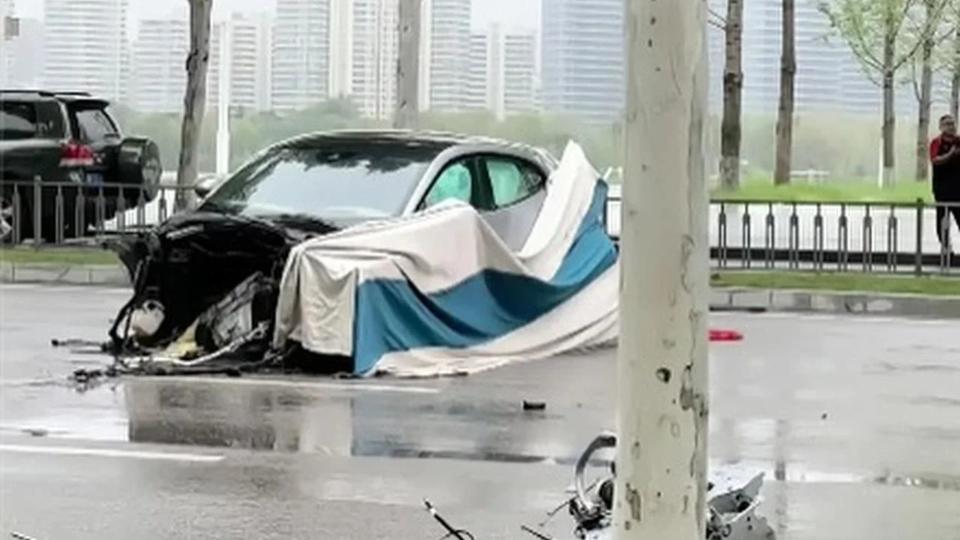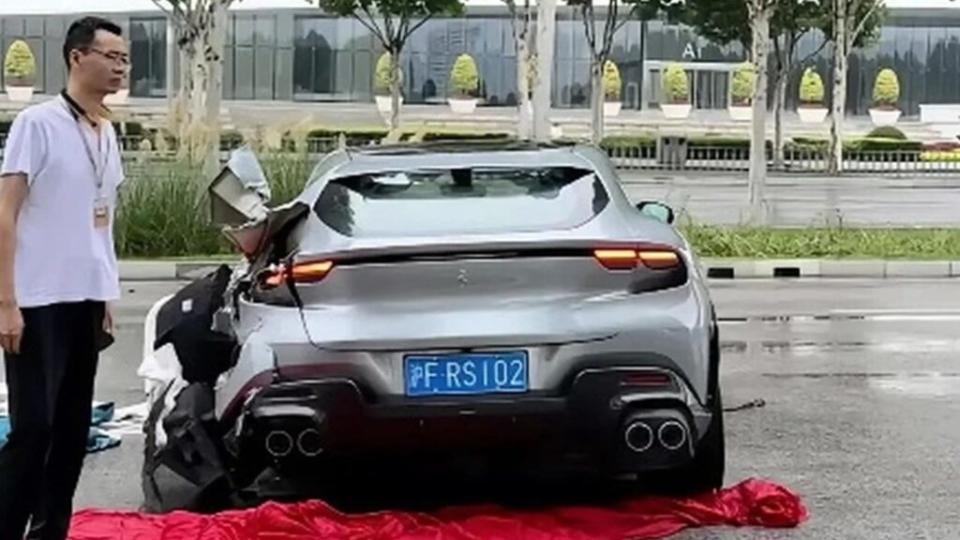Read the full story on Modern Car Collector

A Ferrari Purosangue was recently involved in a catastrophic crash in China, resulting in the supercar splitting in half. Dramatic images shared on social media depict the wreckage, with the front end of the vehicle completely torn apart and lying in the middle of the road.


While details about the incident are limited, it is believed that the Purosangue was traveling at a high speed when the crash occurred. The severity of the impact caused the entire front section, including the V12 engine and front sub-frame, to detach from the rest of the vehicle. This suggests that the design of the Purosangue, much like other mid-engined supercars, incorporates features to dissipate energy in the event of a crash to protect occupants.
This incident is not the first time a Purosangue has been wrecked. Earlier this year, another Purosangue was totaled during a pre-delivery test in Maranello. That car also suffered extensive damage after veering off the tarmac and rolling over in a field.
The Ferrari Purosangue is equipped with a 6.5-liter V12 engine that produces 725 horsepower and 528 lb-ft of torque. The engine is paired with an 8-speed dual-clutch automatic transmission, enabling the Purosangue to accelerate from 0 to 62 mph in just 3.3 seconds and achieve a top speed of 193 mph.


The recent crash highlights the impressive yet sometimes precarious nature of high-performance vehicles like the Purosangue. While designed for ultimate performance and luxury, these supercars can be unforgiving at high speeds, underscoring the importance of responsible driving.
The Ferrari Purosangue, unveiled as Ferrari’s first four-door, four-seater model, combines the brand’s signature performance with the practicality of an SUV. Despite the crash, the Purosangue remains a symbol of Ferrari’s engineering prowess and luxury.
As investigations continue into the cause of the crash, it serves as a stark reminder of the potential dangers associated with high-speed driving, even in vehicles designed with the utmost safety and performance standards.










